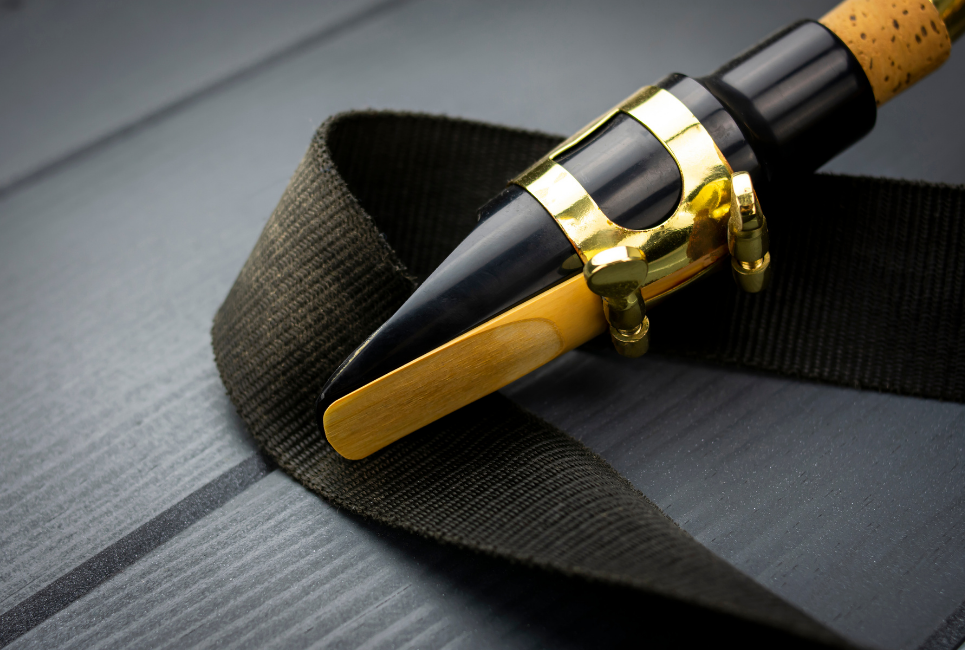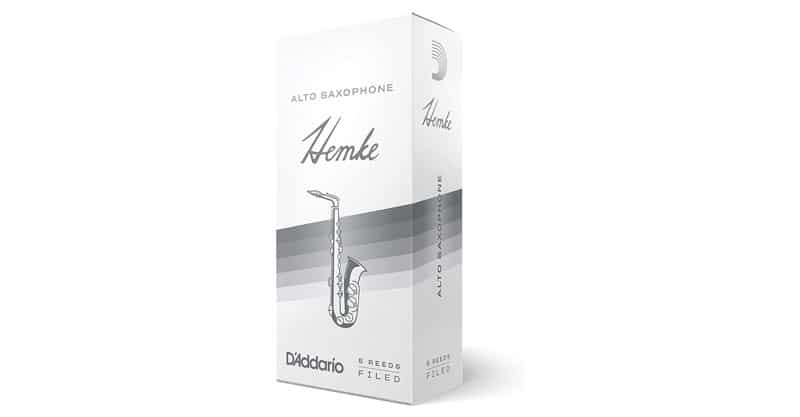- Guide to the Best Saxophone Reeds - April 18, 2022
- Best Selmer Saxophones Brand Guide - April 6, 2022
- Cecilio CCO 400 Review and Guide – Key Information On this Instrument - February 21, 2022
The Best Things Come in Small Packages
It’s cliche but true! Especially when it comes to saxophones. The reed is the first thing the air from your lungs hits so it is so essential to have a quality reed to create the standing wave within the instrument.
And despite being a small piece of wood barely bigger than your finger, the quality of your reed can greatly affect your tone and playing.
Bottom Line Up Front
The best reeds are in order: D’Addario Hemke (3), Vandoren SR2125 (2.5), D’Addario Royal (4), Vandoren SR423 ZZ (3), Vandoren SR263 JAVA (3), D’Addario Rico Select Jazz (3), D’Addario Woodwinds Rico (2.5)
Anatomy of a Mouthpiece and the Reed’s Part in it… er, on it… uh, Below it?
Reeds are made of wood*…well, kind of. Technically, a reed is made of cane which is more grass than tree**, but a reed is wood-like, and if it looks like wood and quacks like wood, then for all intents and purposes…
*Most reeds. There are some synthetic reeds that have their own set of pros and cons. Scroll down for more information on synthetic reeds.
**Don’t quote me on that. I only have one semester as a subpar BioChem major over 10 years ago as any credit to being a biologist.
The cane specifically for reeds is, historically, harvested in the coastal regions of Southern France and Spain and, more recently, the mountainous area of central-west Argentina.
The means by which reeds are produced is quite fascinating (for geeks like me, at least), but the short version: The cane is cut down like a star player on a breakaway, laid out in the sun to dry for a month (give or take), and then stored in a warehouse until it is needed in a factory for cutting.
In the factory, it is cut into tubes graded by diameter and wall density which, in turn, are cut into splits and made into reed blanks. These blanks are tapered into reeds through the use of blades or CNC machines.
The finished reeds are finally graded for strength by machine (disappointingly, not thru a series of arduous tasks akin to a strongman competition: “PUSH, REED! PUSH!”)
Furthermore, a reed’s strength is a quantifier of its resistance, not its thickness. Stiffer reeds, those with less flexibility, have higher ratings. In this regard, a higher rating is not a comment on the reed’s quality.
The higher-rated a reed, the more force (air) will be required to vibrate the reed. Beginners should start with a lower strength reed until they build strength in their own embouchure.
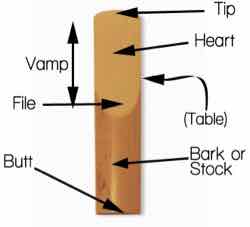
How Did You Arrive at Your Ratings?
I personally cut down a mighty oak tree and made one singular reed from the impressive amount of wood. I then used that reed to give myself a baseline. Every other reed, I tried and rated it however much higher above my own reed made with my sweat, blood, and tears…which was plentiful, lemme tell you.
Kidding.
I used my own personal experiences with saxophone reeds as a 20-year player to create my own ‘Best of’ list. I assigned the #1 pick a score of 10 and subsequently decreased the score by 1 for each place in the rankings. I also researched ‘best of’ lists from across the internet and other publications.
I set scores for these reeds in the same manner. Each reed’s overall score was determined by adding up their scores from each individual list.
I prefer this approach because while I am the writer of this article and I get a chance to stroke my ego by putting my subjective favorites at the top, I don’t think that one singular person should be trusted with bestowing the “BEST X” honor on any one thing. Even awards shows have their own panels and academies voting.
With this approach, consistency is also rewarded. I personally think that an argument that a reed that consistently scores in the bottom half of the top 10 across multiple reviewers is better than a reed that is rated as the best by one singular reviewer should be considered.
Without further ado!
The Best Reeds
1. Andre Reed

Go Bills. Ay-ay-AY-Ay!
Football Hall of Fame wide receiver Andre Reed is our #1 ree-wait, sorry! Got off track…
1. D’Addario Hemke – Strength: 3
D’Addario is one of the most famous musical brands in the world so it’s unsurprising that they would make this list several times, including the #1 spot. D’Addario produces everything from guitar strings to drumheads to saxophone reeds.
The Hemke reeds will give your playing a rich, sultry tone. These reeds are easy to control and are highly flexible with great balance owing to their thinner tip, shorter vamp, and filing.
The thin tip will also give your saxophone a fast response and crisp articulation. A downside to the reeds is their pack only comes in a set of 5.
While the strength of 3 was the favorite, these reeds also come in 2.5, 3+, 3.5, and 4.
Pros
- Rich tone
- Great articulation
- Flexible and balanced
Cons
- Only 5 reeds per pack
- The thin tip leaves them susceptible to breaking more easily
2. Vandoren SR2125 – Strength: 2.5
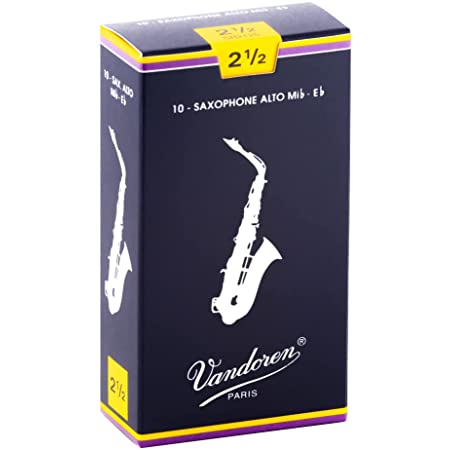
Vandoren is one of the most famous reed-makers, going back to the start of the 20th-century. The Vandoren company focuses on accessories for clarinets and saxophones (reeds, ligatures, mouthpieces).
Another thinly cut reed, the Vandoren SR2125 has great flexibility which allows for clean articulation on both staccato and legato passages. The SR2125 has excellent tone across all registers of the saxophone. These reeds have fantastic response in all registers too which allows for an easy control of dynamics.
Each individual reed is encased in a ‘Flow Pack’ to ensure the reed’s quality is retained from factory floor to distribution to whenever the last reed is pulled from your package. The Vandoren SR2125 comes in packs of 10. While the strength of 2.5 was the favorite, this model also comes in strengths of 1, 1.5, 2, 3, 3.5, 4, and 5.
Pros
- Great tone across all registers
- Flexible with great response
- Clean articulation
- Each reed encased in a ‘Flow Pack’ to ensure freshness upon first use
Cons
- Pricey (I don’t want to say “expensive” because compared to the cost of a (quality) saxophone, mouthpiece and ligature, the cost of reeds seems minimal.)
3. D’Addario Royal – Strength: 4
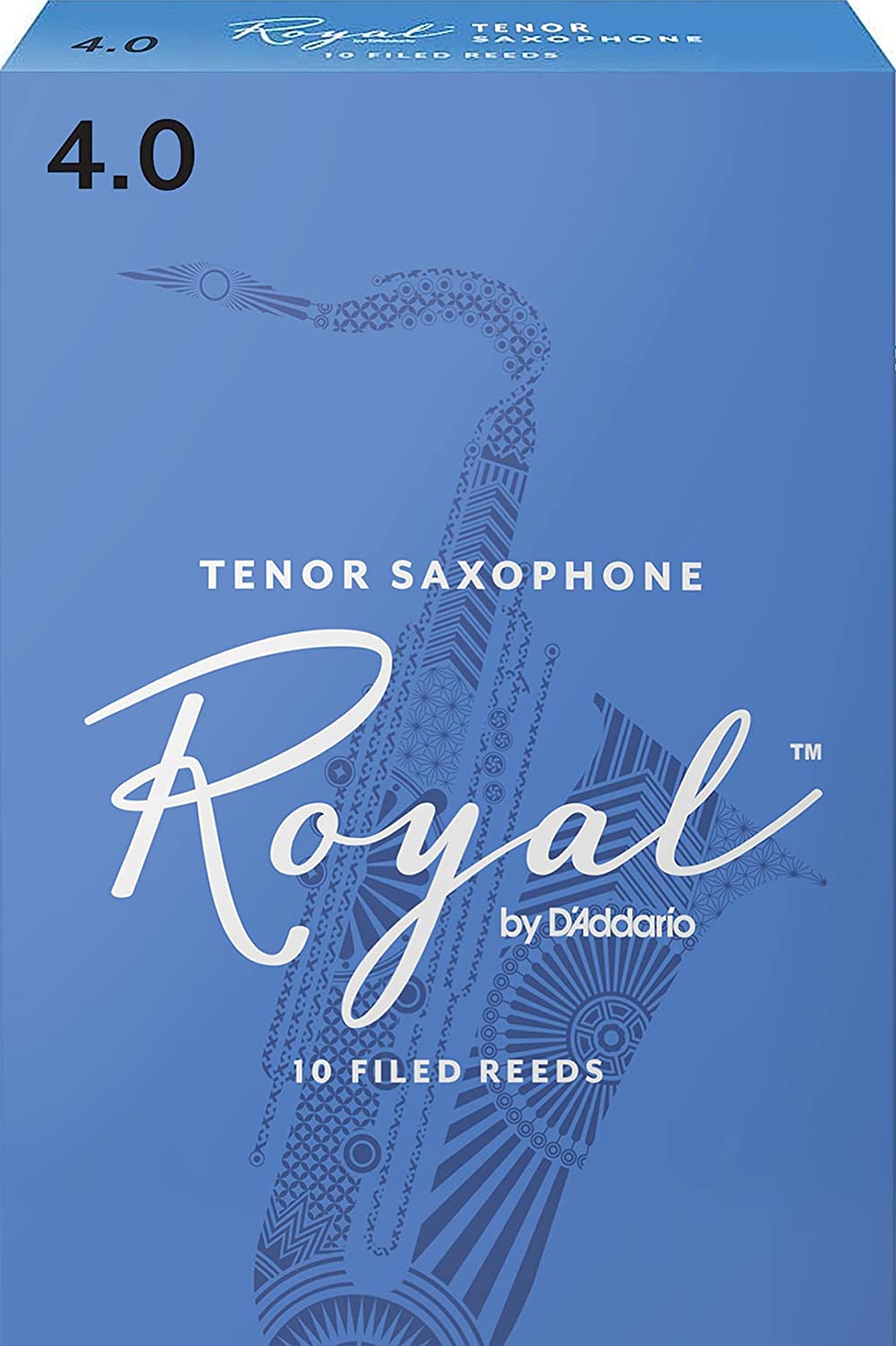
The D’Addario Royal, formerly known as Rico Royal, have a French cut (straight strip of bark removed from just below the vamp). The French cut gives the Royals a clear tone with a quick response. They are comparable to the classic Rico brand, but of a higher-quality.
The Royals are a versatile reed, favored by professionals in both the jazz and classical worlds. With reed strengths ranging from 1.0 to 5.0 and a reasonable price, Royals can be enjoyed by players of all skill levels (though the strength of 4 was the favorite here).
Pros
- Versatile. Great sound for both jazz and classical.
- French cut gives a clear tone
- Affordable
Cons
- If you want the best reed, the strength of 4 may be inaccessible for beginner players who still have to develop their embouchure.
4. Vandoren SR423 ZZ Reeds – Strength: 3
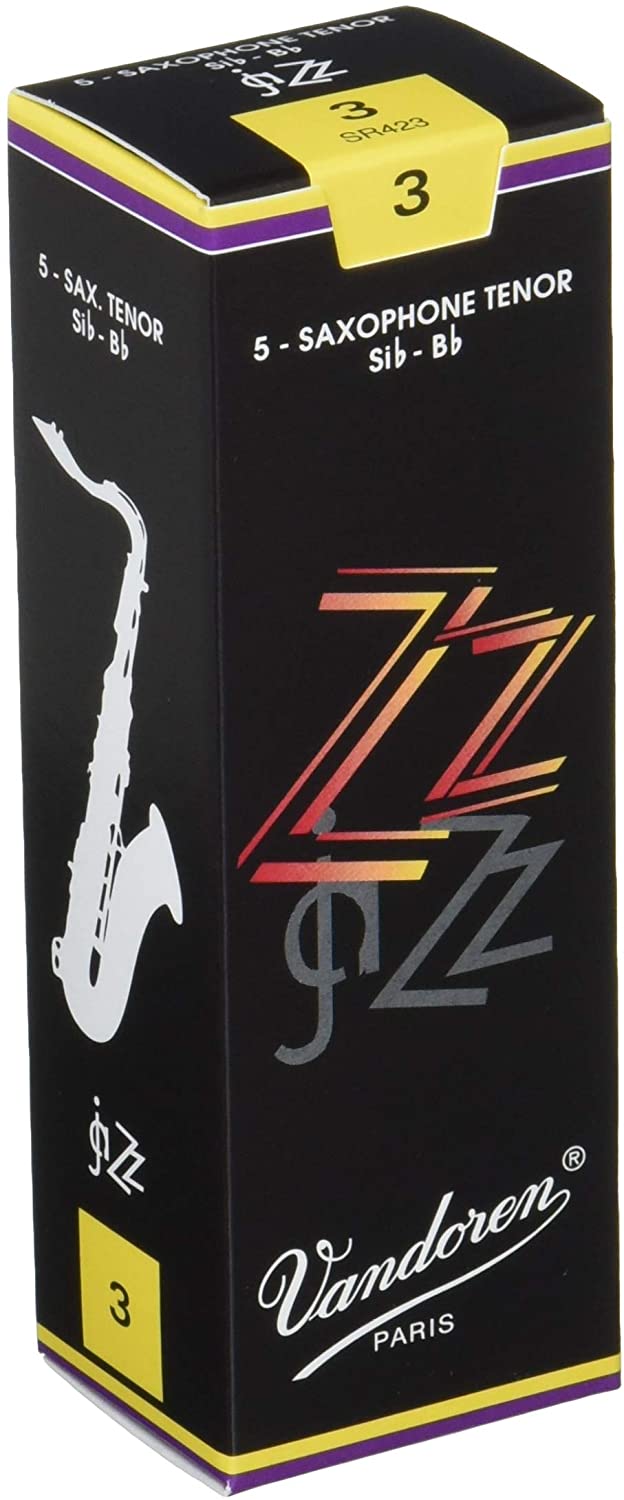
Vandoren made a series of reeds specifically designed for jazz players: The ZZ, Java Green, Java Red, and the V16. Compared to the rest in the series, the SR423 reeds have a fuller and darker tone.
These reeds have great resonance and add some extra character to the articulation, perfect for players in jazz, funk, or pop.
The ZZ Reeds are a combination of their other reeds’ attributes. From the V16, it borrows the thickness of the heart and stock, and its rounded tip. From the Java reeds, it borrows the flexibility.
Altogether, the reed has great character, swift response, and durability. The strength of 3 was the favorite, but the ZZ reeds come in 1.5, 2, 2.5, 3.5, and 4
Pros
- Reeds encased in a ‘Flow Pack’ to ensure freshness upon first use
- Full tone with a lot of punch
- Borrows from other great reeds
- specifically designed for jazz players in mind
Cons
- Not to say that it can’t be used for non-jazz genres, but its design is specifically for jazz. Any residual benefit is just that: residual
- Pricey. Box of 5 for the price that some of these (10-pack) reeds sell for.
5. Vandoren SR263 JAVA – Strength: 3
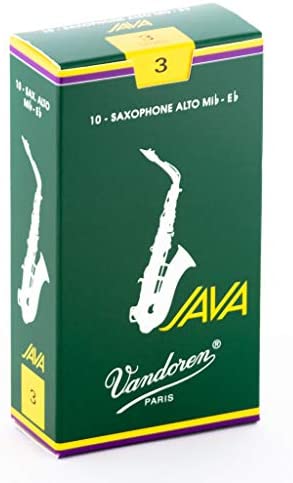
Three of our top 5 reeds are Vandoren, hinting at their quality. Much like our number four pick, the JAVA reeds were designed with jazz players in mind specifically. The SR623 have a full tone like the ZZ reeds, but whereas the ZZ reeds are darker, the JAVA reeds are brighter.
The SR623 JAVA reeds are quite flexible and vibrate over a larger palette. This creates a very full sound with fantastic resonance. It could be argued that this leads the JAVA reeds to be more durable (vibrating over a larger palette means less force on any individual cross-section of the reed).
Again, great for jazz, funk, pop, etc. The reeds come with a ‘Flow Pack’
Pros
- Full, bright tone
- Great response and articulation
- Pack of 10
- Specifically designed for jazz players
Cons
- While not as expensive as the previous model, these are among the most expensive reeds
- Again, can certainly be used in other genres, but it was designed specifically for jazz players.
6. D’Addario Rico Select Jazz – Strength: 3
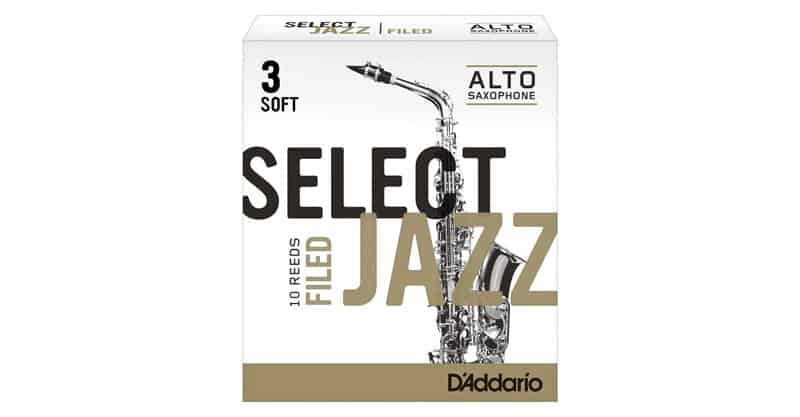
D’Addario continues to clean up in this list, holding half of the top 6 spots. The Rico Select Jazz is available in both filed and unfiled, but regardless, these reeds pack a punch, giving your saxophone a powerful tone with great resonance and a strong core across all registers.
Another reed designed specifically with jazz players in mind (as the title suggests), these reeds have great articulation with a little extra sizzle.
These reeds have the thickest spine and blank of all D’Addario jazz reeds as well as a longer vamp. The Strength of 3 was preferred, but the Rico Select Jazz is also available in third sizes 2 through 4.
Pros
- More size options (third sizes rather than the traditional half)
- More variety in filed vs. unfiled options
- Powerful tone with a strong center
- More durable due to longer vamp.
Cons
- I don’t know if I would recommend this reed to classical players. It’s very jazzy
7. Fulton Reed

Quack! Quack! Quack!
Oh, come on. You thought I was done making these jokes? Who doesn’t love OG “Bash Brother” Fulton Reed?
7. D’Addario Woodwinds RJA1025 Rico- Strength: 2.5
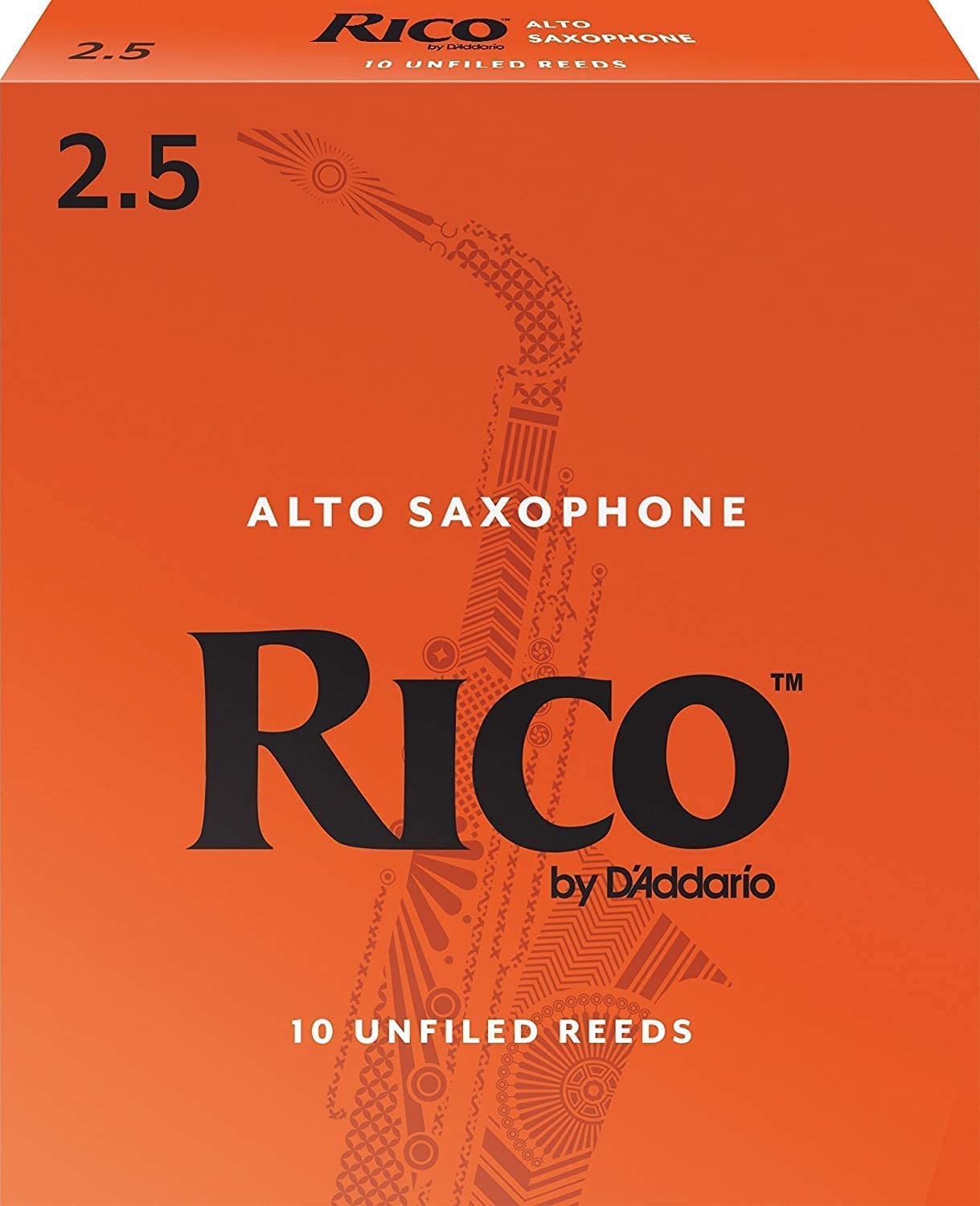
D’Addario Woodwinds Rico are, perhaps, the easiest to play on this list. Rico Reeds are a standard for saxophone playing in an educational-setting. The thinner vamp requires less force to vibrate.
The reed is unfiled which gives the tone more ‘oomph’. And the traditional design gives your saxophone a more familiar sound and playability.
These reeds really excel in the higher registers and require less force to play. In a performance, every Joule of energy counts! The 2.5 was the favorite, but these reeds are also made in 1.5, 2, 3, 3.5, and 4.
Pros
- Affordable price for a 10-pack
- Ease in playing, especially in the higher registers (relatively to other reeds)
- Familiar. Chances are you have used Rico reeds at some point in your saxophone journey
Cons
- Strength of 2.5 may make it easier to play, but that also limits the top-end too (not in terms of register, but quality of tone)
Honorable Mention
Légère
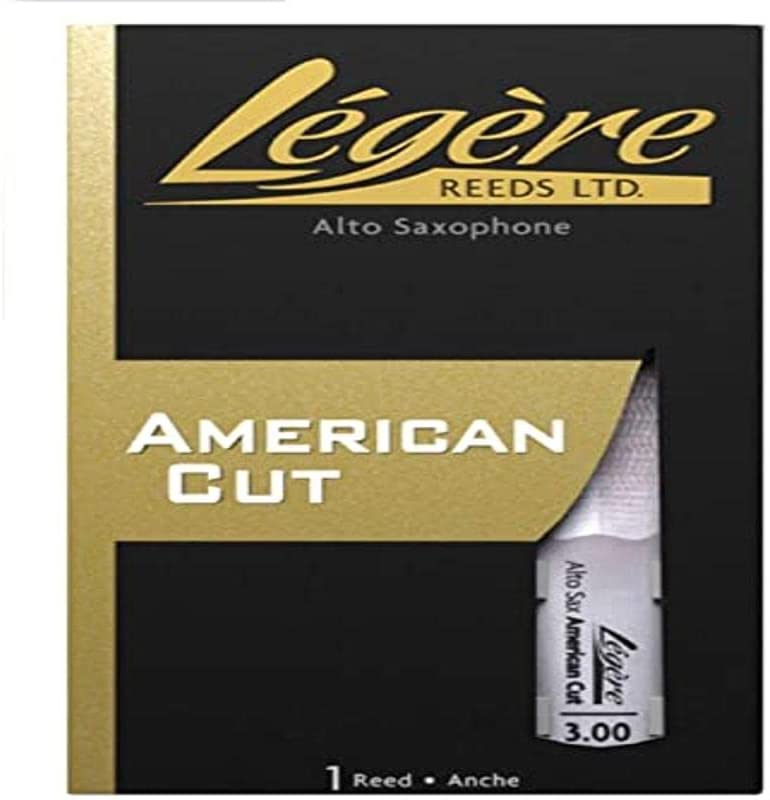
Légère reeds are as close as you can get to a villain origin story (or a heroic origin story, but that’s not as fun). Guy Légère earned a PhD in Chemistry.
He began playing the clarinet in his late 20’s and was quickly frustrated by the reeds that were available, spending more time on the hunt than practicing (possible hyperbole).
He decided to use his experience and knowhow as a Chemist (not the British version) to manipulate materials into the best reed he could create. He teamed up with Mark Kortschot and Légère Reeds came into existence.
Légère boasts an impressive portfolio of synthetic reeds, but the most popular may be the American Cut. The American Cut has a brighter, colorful tone with great playability.
They have a “clear, low register” and a “vibrant altissimo.” As a synthetic reed, these reeds are more durable than cane reeds and don’t need to be moistened before playing!
Pros
- Bright, clear tone
- Doesn’t need to be moistened before playing.
- More durable than cane reeds
Cons
- In terms of tonal quality, I don’t think synthetic reeds are there. I wouldn’t say they have a bad tone, but they can’t match up to the best cane reeds out there (yet!)
Cecilio
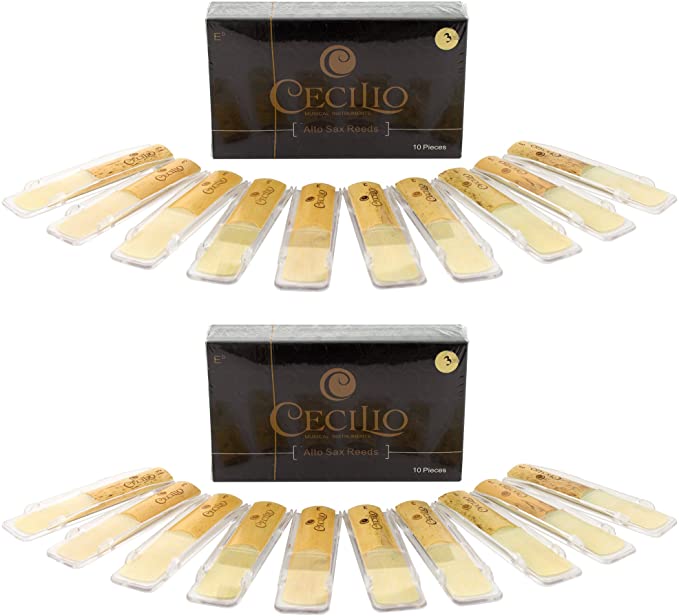
Cecilio is a brand known for their beginner instruments. While it would seem insane for a professional to bring a Cecilio instrument onto stage with them, Cecilio still creates instruments and accessories with great value.
You’re not going to blow anybody away with a Cecilio sax, but if you’re in a tight spot and need a cheap, reliable reed fast? Cecilio is a good bet.
Pros
- Value. The most reeds per money spent.
- Protective case for each reed.
Cons
- Quality isn’t the best. You’re buying Cecilio reeds for their price, not their tone
Things to Consider Before Buying
a) One of my (few) complaints with the saxophone is that it is made up of so many interchangeable parts. You have your body with tens of keys and buttons, different bell shapes, different lacquers/finishes.
But then you also have your mouthpiece which can be made of many different materials, different types of ligatures also made of different materials. Substituting any of these affects the tone.
This also means that the “best” reeds may not be the best for your specific mouthpiece. This doesn’t mean the reed isn’t high-quality, just not a great match. Consider the makeup and measurements of your mouthpiece and how the reed will play with that.
b) Similarly, your tone is yours to craft. It’s a very personal expression. Stepping outside the norm may prove to be the best step for you. Just because you don’t play jazz doesn’t mean you can’t use one of the jazz reeds. Likewise, if you do play jazz that doesn’t mean that you have to use a jazz reed.
c) What genre(s) are you typically playing? Different reeds are better suited for different tones and sounds. Your genre will influence which of these tones/sounds are better achieved by your choice of reed.
Consider one of the above reeds made specifically for jazz (Rico Select Jazz, Vandoren JAVA) for, well, jazz or D’Addario Royal for classical.
d) Skill level. If you’re just beginning, you’ll probably want a reed with a lower strength until you develop your embouchure. Once you improve, you can move up in reed strength. The D’Addario Woodwinds Rico are a great choice for beginners for ease of playing with quality of tone.
FAQs
Answer: For starters, copying the specific reed, mouthpiece, ligature, and saxophone that a professional player uses does not guarantee that you will be able to replicate their tone. Equipment is only half the battle. Technique and what you do with the equipment is the other half.
That being said: Charlie Parker favored high strength reeds, maybe something akin to a D’Addario Royal 4 or a Rico 5. Likewise, Coltrane favored hard Rico reeds. Sonny Rollins used medium-strength Frederick Hemke reeds. Marcel Mule used reeds with strong resistance. Kenny G uses Hemke reeds.
Answer: There is no definitive answer as there are a number of factors that influence how long a reed lasts: the durability of the reed itself, how often you play with it, the intensity of the music you’re playing.
But you should consider replacing your reed no less frequently than every 4 weeks, less time if you’re playing your saxophone more frequently in that time.
Answer: About one minute. Too short and the reed may not be moist enough. Too long and reed may become oversoaked. In both instances, the reed will not vibrate optimally. You New reeds might require to be soaked in water for about 20 minutes before their first use.
Conclusion
D’Addario and Vandoren consistently make the best reeds. They have been adored by saxophone players since these companies’ inception over a century ago.
These companies make a wide variety of reeds, compatible with any genre and any style of performance. I don’t think you can go wrong with the D’Addario Hemke or Vandoren SR2125. Happy playing!
Looking for more interesting readings? Check out:

